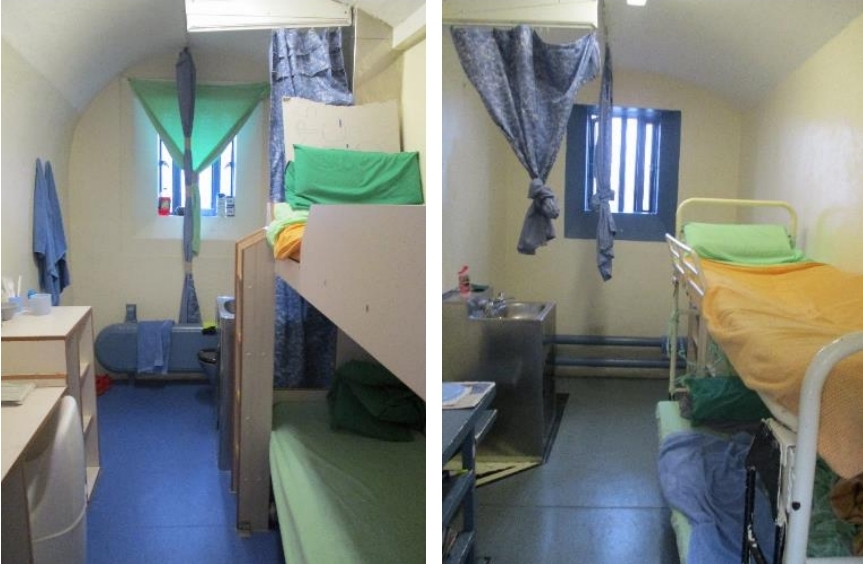
Prison Overcrowding: Swansea Inmates Living In Cells “Cramped and Lacking Privacy,” New Report Reveals
The Victorian-era prison has again been labeled by the probe as being too overcrowded, with many cells designed for one hosting two prisoners.
Prisoners are still being subject to conditions described as the worst in England and Wales
1 in 10 inmates told the Inspectorate that they had been assaulted by staff
New arrivals given just half an hour of fresh air a day.
My Mark S Redfern
Conditions inside HMP Swansea, one of the most ancient in Wales, have been revealed in the latest report by His Majesty’s Inspectorate of Prisons (HMIOP).
The unannounced inspection back in late February to early March 2023 found major failings in the category B facility.
A repeating theme running through probes into the city’s prison, built between 1845 and 1861, is a significant overcrowding problem described by the Inspectorate as “one of the most overcrowded in England and Wales.”
The prisoner population stood at 406 men, much more than the 265 certified normal capacity, at the time of the visit.
Putting two inmates in a cell designed to hold just one is “never desirable” says the Inspectorate, but the practice is happening at scale in the prison.
HMP Swansea still does not comply with the 2015 UN standards for prison conditions, dubbed the Nelson Mandela Rules, which permit only one inmate per cell.
The Inspectorate commented: “Most prisoners lived in overcrowded cells which were cramped and lacked privacy.” A survey of prisoners paired with the report shows that 83% of inmates were sharing a cell.
The target the current prison leadership has been given is to reduce the maximum operational capacity from 492 to 468. Much of this overcrowding problem is in the hands of other authorities within the criminal justice system.
Only minimal changes have been made to counteract living in a Victorian-era facility, such as putting up privacy screens and adding lids to toilet bowls. But the watchdog added that there was no lockable storage for the inmate’s personal items, for example.
Questions have also been raised in the report over the prison officer’s use of body-worn video (BWV). According to the latest figures, only 60% of incidents were filmed on BWV cameras worn on the chest or shoulder, and few were activated soon enough to capture the start of any altercations.
But the report also mentions that no uses of batons or PAVA spray were recorded by staff. Acts of violence had reduced significantly from the figures published in the last inspection, “fights and assaults” were down from 281 incidents per 1,000 prisoners to just 88. There were only 34 violent incidents in the previous 12 months, according to prison chiefs.
The drastic drop in these figures of noted violent incidents, although promising, are recorded by officers and maintained by management. The anonymous prisoner survey admits that 11% of inmates had been the victim of physical assault and 18% of threats and intimidation. Almost 1 in 10 told the Inspectorate that they had been assaulted by staff.
In the induction cells, HMP Swansea’s B wing, the Inspectorate notes that the “regime… was worse than in the rest of the prison” as new inmates only had access to as little as 45 minutes out of their cells a day.
New arrivals were given just half an hour of fresh air a day and permitted 15 minutes to shower, as well as the discovery that there was no formal induction programme to help men adapt to prison life.
Outdoor jackets were not routinely supplied to prisoners for when they were allowed out in the exercise yard except to older inmates, and there were no purposeful activities given apart from walking or running laps.
Questions about healthcare inside the prison should also be raised. Whilst on site, Inspectorate officials witnessed via the small hatch manned by health workers “missed doses of important medicines”, and described the prescribing of meds on unexpected release as “not robust”. Uptake for miracle overdose reversal drug Naloxone on release was also said to be poor.
Dyfodol, the agency doing substance recovery work on the inside, is mentioned as having done good work among prisoners including in-cell and face-to-face. Officials note that they hadn’t been given access to patient clinical records by prison management “which presented a risk,” according to the Inspectorate.
Provisions for disabled inmates should also prove an area for concern as the prison only had one cell adapted for inmates who use wheelchairs.
One wheelchair user was documented as not having been able to shower “for some time” due to lack of facilities.
Details of the full report and accompanying staff and inmate surveys, released in June but unreported in the Welsh press,can be found on the Justice Inspectorate website.


